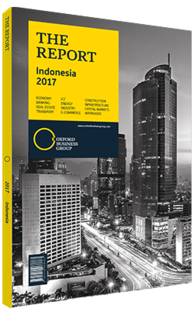Elfien Goentoro, President Director, PELNI: Interview

Interview: Elfien Goentoro
What are the priorities for new sea transport services routes, and what is being done by the government to boost the maritime industry?
ELFIEN GOENTORO: We depend on demand for sea transport services to open up new routes. The number of vessels we can operate is relatively fixed, so when a new route is opened up, it is usually an old route that is being deviated. To reduce price disparities in the country, the government has subsidised transport costs for ships along six routes that start from the island of Java to remote areas in the East. These six routes were set out by the government as part of the Maritime Toll Road scheme in 2016. PELNI is an operator of a Sea Toll programme, which aims to reduce logistics costs. The Ministry of Commerce coordinates maritime charges, and with scheduled and fixed vessel availability, agricultural and marine products in the outermost regions can be transported to industrial areas for consumption.
How do you assess the Maritime Toll Road scheme?
GOENTORO: The Marine Toll Road programme is a very positive thing, since until now the priority of the transport sector was land transport. Indonesia is the largest archipelago of islands in the world, with the second-longest coastline at 54,000 km, 5.8m sq km of sea surrounding it, three time zones and more than 17,000 islands. It therefore has great maritime potential, which the Maritime Toll Road scheme aims to take advantage of. The main benefit of this programme is that it is making it easier for people living on the islands to travel, as the government provides large vessels for this purpose. It is also facilitating the delivery of goods, particularly basic goods and other essential materials to the outer islands, and reducing the national price disparities for such goods. The main challenge for the programme is that shipbuilding takes time, but the needs of people living on the islands outside Java are urgent. These people have basic needs that need fulfilling, such as for health and education services and for materials, clothing, food and housing, all of which are currently lacking. Meeting these requirements through maritime transport requires a shipping company that is ready and willing, with a good track record. Another big obstacle are the upgrades necessary at port facilities in the outer islands and in remote areas of the country.
What steps need to be taken to improve fleets, infrastructure and human resources?
GOENTORO: First of all, we need to enhance the capacity of the crew so that is ready to work at any time and able to fulfil the relevant safety and security requirements. Next, we have to implement ticket management systems to accelerate the process of paying for travel, and install CCTV to improve security. It is also important to improve passenger ship accommodation by providing televisions, sports facilities and children’s playgrounds, among other things. For cargo ships, we need to ensure that they are equipped with the necessary technology for goods to be transported, tracked and traced easily. For human resources, crews should be certified according to the International Convention on Standards of Training, Certification and Watchkeeping for Seafarers.
What is needed to support the government’s campaign to bolster maritime tourism?
GOENTORO: We are supporting the government’s maritime tourism targets through the offer of several maritime travel packages. For the future, we are considering the purchase of a new passenger ship that is energy-efficient and in line with good environmental practices. We will also continue to act in cooperation with different stakeholders to develop maritime tourism. Furthermore, it is vital we develop human resources in tourism for our vessels, with skills such
You have reached the limit of premium articles you can view for free.
Choose from the options below to purchase print or digital editions of our Reports. You can also purchase a website subscription giving you unlimited access to all of our Reports online for 12 months.
If you have already purchased this Report or have a website subscription, please login to continue.

